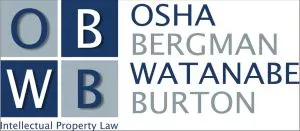On February 13, 2024, the USPTO published its much-anticipated guidance on inventorship for AI-assisted inventions with immediate effect.1 This guidance, issued pursuant to President Biden's Executive Order on AI issued in October 2023,2 clarifies how the USPTO will analyze inventorship of inventions made by humans with the use or assistance of AI and explains how this may impact other areas of patent practice. The USPTO has also issued examples demonstrating how the new guidelines should be applied in practice and is seeking public comments on the guidance as well as the examples.
Background
Artificial Intelligence ("AI") has, in a remarkably short period of time, had a transformational effect on the way we live and do business. It has had a similar impact on the world's IP systems – raising many new and interesting questions. In the patent context, many of the questions have centered on the question of inventorship and what impact the use of AI has on who (if anyone) can be named as an inventor.
In 2022 the U.S. Court of Appeals for the Federal Circuit held in Thaler v. Vidal that "[o]nly a natural person can be an inventor, so AI cannot be."3 The U.S. Supreme Court has denied certiorari in this case, so the law in the United States is settled that AI or other non-natural persons cannot be named as an inventor in a patent or patent application. However, the Federal Circuit specifically left open the question of "whether inventions made by human beings with the assistance of AI are eligible for patent protection."
In other words, where there is a valid human inventor but also a significant contribution from an AI system, is patentability defeated due to the role of AI in the inventive process? Or, is the invention patentable so long as there is at least one human who made a contribution significant enough to be an inventor? This is the question addressed by the new USPTO Guidance on AI-assisted Inventions ("the Guidance").
Key Takeaways of the Guidance
On the subject of patentability, the Guidance concludes that AI-assisted inventions are not categorically unpatentable due to improper inventorship.
However, the question remains as to how inventorship is determined if an AI system contributed to the conception or discovery of the invention. By law, every named inventor in a patent application must be a natural person and must have made a "significant contribution" to the claimed invention. The guidance attempts to answer how "significant contribution" by a natural person should be determined within the context of an AI-assisted invention, as explained below.
In doing so, the guidance leans on the law of joint inventorship as set out in Pannu v. Iolab Corp.4 This1998 Federal Circuit decision articulated a three-part test ("the Pannu Factors") to assess the significance of a joint inventor's contribution to an invention in order to determine whether inventorship is proper. According to the Pannu Factors, to qualify as a significant contribution, an inventor must:
1. contribute in some significant manner to the conception of the invention;
2. make a contribution to the claimed invention that is not insignificant in quality, when that contribution is measured against the dimension of the full invention; and
3. do more than merely explain to the real inventors well-known concepts and/or current state of the art.
Using the Pannu Factors as a foundation, the guidance proposes five non-exhaustive "guiding principles" to aid examiners and applicants in determining proper inventorship in AI-assisted inventions:
1. A natural person's use of an AI system in creating an AI-assisted invention does not negate the person's contributions as an inventor. The natural person can be listed as the inventor or joint inventor if the natural person contributes significantly to the AI-assisted invention.
2. Merely recognizing a problem or having a general goal or research plan to pursue does not rise to the level of conception. A natural person who only presents a problem to an AI system may not be a proper inventor or joint inventor of an invention identified from the output of the AI system. However, a significant contribution could be shown by the way the person constructs the prompt in view of a specific problem to elicit a particular solution from the AI system.
3. Reducing an invention to practice alone is not a significant contribution that rises to the level of inventorship. Therefore, a natural person who merely recognizes and appreciates the output of an AI system as an invention, particularly when the properties and utility of the output are apparent to those of ordinary skill, is not necessarily an inventor. However, a person who takes the output of an AI system and makes a significant contribution to the output to create an invention may be a proper inventor. Alternatively, in certain situations, a person who conducts a successful experiment using the AI system's output could demonstrate that the person provided a significant contribution to the invention even if that person is unable to establish conception until the invention has been reduced to practice.
4. A natural person who develops an essential building block from which the claimed invention is derived may be considered to have provided a significant contribution to the conception of the claimed invention even though the person was not present for or a participant in each activity that led to the conception of the claimed invention. In some situations, the natural person(s) who designs, builds, or trains an AI system in view of a specific problem to elicit a particular solution could be an inventor, where the designing, building, or training of the AI system is a significant contribution to the invention created with the AI system.
5. Maintaining ''intellectual domination'' over an AI system does not, on its own, make a person an inventor of any inventions created through the use of the AI system. Therefore, a person simply owning or overseeing an AI system that is used in the creation of an invention, without providing a significant contribution to the conception of the invention, does not make that person an inventor.
Furthermore, to assist the public and examiners in the application of these guiding principles, the USPTO issued two examples (Example 1 and Example 2) along with the Guidance. Example 1 provides an example of using AI to assist with the invention of a mechanical invention while Example 2 provides an example of using AI to assist with development of a therapeutic compound. A more detailed examination of these two examples and their impact on various practical invention scenarios will be forthcoming in a future article.
Another question that had been discussed prior to issuance of the Guidance was whether there should be a new obligation for applicants to explain any contributions made by an AI system to a claimed invention. Fortunately, the Guidance does not go that far. Rather, it merely clarifies that the existing rule of disclosure under 37 C.F.R. § 1.56, which includes the disclosure of inventorship information material to patentability, will also apply to applications involving AI-assisted inventions. Specifically, because incorrect or improper inventorship is grounds for rejection under 35 U.S.C. § 101 and § 115, a duty to disclose may arise with respect to information on whether and how AI was used in the invention creation process. Similarly, the existing rule for duty of reasonable inquiry as defined in 37 CFR 11.18 is applicable to applications involving AI-assisted inventions. Hence, patent practitioners must be mindful to perform a reasonable inquiry regarding inventorship. For example, to determine the level of contribution made by natural persons, a patent practitioner may need to seek answers about whether AI was used in the creation of the invention and, if so, to what degree.
Lastly, some countries may, now or in the future, permit AI to be named inventors on a patent. In this event, what happens when a U.S. application claims priority to a foreign application naming an AI as an inventor? The Guidance clarifies that if AI is listed as a joint inventor in a priority application, it must be removed before filing in the U.S. If the AI is the sole inventor, then the application cannot be filed in the U.S. because, as discussed above, only natural persons can be an inventor under current U.S. law.
Though the Guidance is a good start, many uncertainties remain including exactly what constitutes a "significant contribution" in the context of AI-assisted inventions. AI is rapidly evolving and changing the world in countless ways. To remain effective, patent law must strive to keep up. The public can be a part of the process – the USPTO is accepting comments on the Guidance until May 13, 2024.
For an in-depth discussion of this topic from the perspective of multiple jurisdictions, please see the book Artificial Intelligence and Patents: An International Perspective on Patenting AI-Related Inventions, edited by Jonathan Osha and published by Wolters Kluwer in cooperation with AIPPI, available here. All proceeds from sales of this book go to the AIPPI Scholarship Fund.
Footnotes
1. "Inventorship Guidance for AI-Assisted Inventions," 89 FR 10044 (February 13, 2024).
2. Executive Order 14110.
3. 43 F.4th 1207, 1213 (Fed. Cir. 2022), cert. denied, 143 S. Ct. 1783 (2023).
4. 155 F.3d 1344 (Fed. Cir. 1998).
The content of this article is intended to provide a general guide to the subject matter. Specialist advice should be sought about your specific circumstances.



